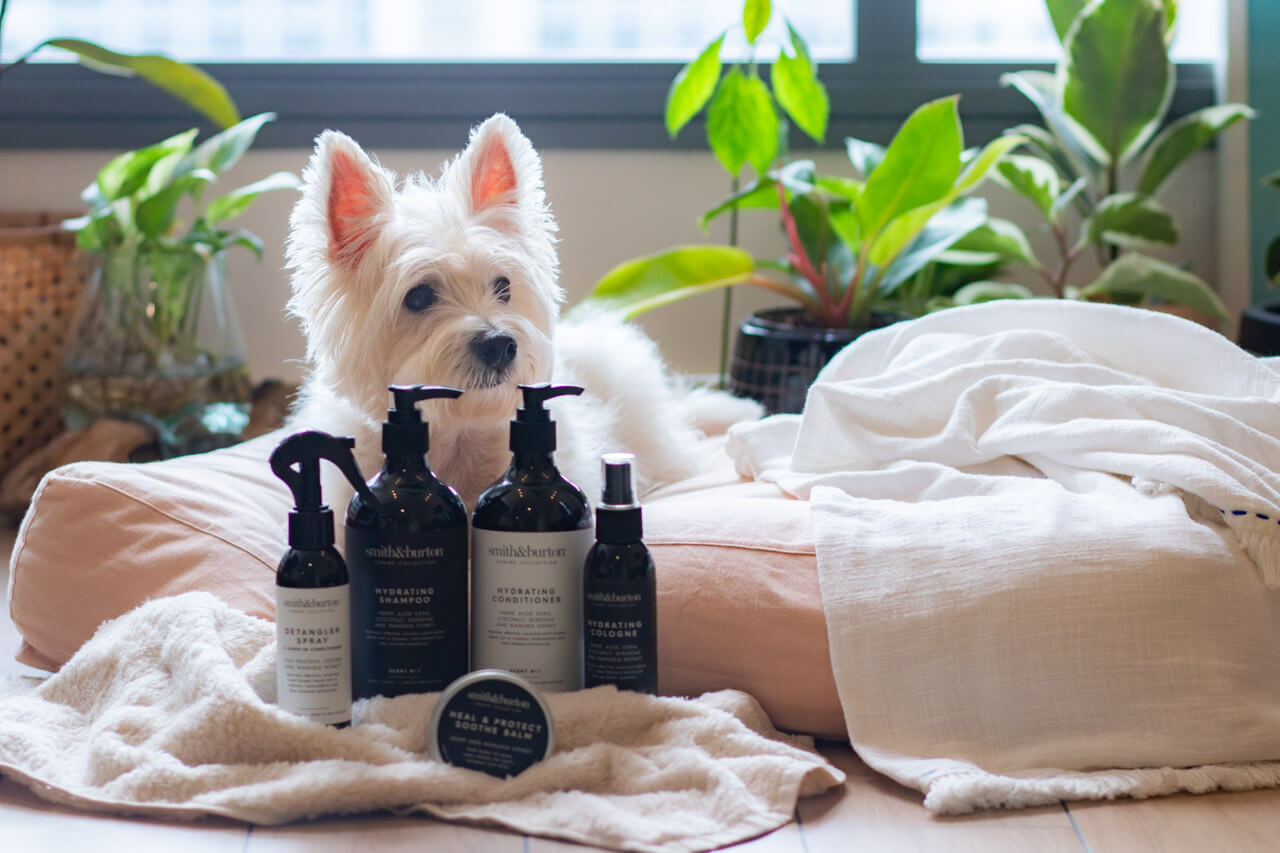On my daily walks with Latte, I almost never fail to see dogs with stained brown paws. I know too well that that's a sign of a paw licker! Latte is sometimes one of them (sans the brown paws). Due to her environmental allergies, paw licking has become a common activity for her all year round. But if we don't keep it under control, the opportunistic yeast will surely cause an infection and her licking will only get worse.
If your dog has started licking her paws, don't brush it off! Stop it before it becomes uncontrollable. Here's how to determine the cause and how to treat it.
Determine the cause of paw licking and solve it naturally
Injury
The first thing to rule out is the presence of cuts, cracks, bites, or debris stuck in your dog's paw. I would say this is the easiest problem to fix.
Remove any debris, clean the wound with an antiseptic solution or gentle paw cleanser, and if necessary, bandage or put a cone on your dog to stop her from licking the area while it heals; to prevent further damage. The problem should resolve in a few days!
Pain
Sometimes dogs lick their paws because of pain or aches. It could be due to an external injury or it could very well be a sprain or joint issue (E.g. Arthritis).
Gently massage the area to see how your dog reacts. If she displays signs of pain, it's time for a trip to the vet for a thorough check.
Roughness and dryness
Dry, rough paws are a very common problem in dogs but it's not what paws should be like! Healthy paws should be soft and smooth to touch. The good news is, dry or cracked paws can be solved by diligently applying on them a moisturising and healing balm or oil.
Dry, crusty paws may also be a symptom of Hyperkeratosis - a skin condition that makes your dog’s paw pads thick, crusty, and "hairy". It usually looks like your dog’s paw pads are splitting into a layer of abnormal hair strands, leading to discomfort and sensitivity.
If you suspect that your dog has Hyperkeratosis, the first step is to consult a vet to rule out medical causes, such as an infection.
While there's no known cure for Hyperkeratosis, you can make your dog a lot more comfortable by protecting and moisturising the paws daily. For severe cases, the vet can remove excess keratin from your dog's paw pads to bring her some relief.
We use the Natural Dog Company PawTection to protect Latte's paws from hot and rough grounds and the Paw Soother to moisturise her paws before she sleeps every night. Do not walk your dog when the ground is too hot. Apply the PawTection balm or put socks or shoes on for your dog, and walk under the shade whenever possible.
Allergy
Potential sources of allergy are aplenty. An allergy can be caused by food, environmental allergens (e.g. grass, pollen, chemicals in floor cleaners), and parasites like fleas and ticks.
Allergies are arguably the most difficult to pinpoint and resolve. To prevent an allergic reaction, try your best to eliminate potential allergens, apply natural flea and tick prevention, and clean your dog's paws after walks (you can also protect them outside with a protective balm or shoes). Don't overlook what you use at home too, choose non-toxic cleaning products that do not contain harsh chemicals.
I also find that an Epsom salt soak helps to soothe the paws and relieve symptoms. You can add one cup to a big tub of warm water and soak your dog in it for 10 to 15 minutes. After which, dry the paws thoroughly.
Besides that, using a soothing shampoo with colloidal oatmeal or natural bentonite clay is also a great idea. Our recommendations:
Yeast overgrowth
Yeast overgrowth in dogs is a huge headache for many dog parents. When a dog's immunity isn't strong enough to keep the yeast population in check, she would be prone to yeast dermatitis.
The warm and moist areas between the paw pads are the perfect place for yeast to multiply. Even if your dog doesn't have a yeast problem at first, paw licking for whatever reason (all that moisture!) can lead to a secondary yeast infection.
Warm and humid weather, over-vaccination and overmedication, food or environmental allergies, and poor gut health may all cause yeast overgrowth. The bad news is, with poor immunity and allergies, yeast infection is likely to keep recurring.

Flaky and dry skin
To treat the external symptoms, you can use a lick-safe antifungal topical treatment, such as the Natural Dog Company Skin Soother, but the underlying cause still needs to be addressed.
There are supplements that can help rebuild immunity and gut health and fight yeast. One example is the Adored Beast Apothecary range.
Stress
Anxiety and stress can also cause your dog to comfort herself through licking. Stressors include moving house, a new baby, and construction noises.
For easily anxious dogs, you can try to calm her down through the use of essential oils or herbs, and building her confidence through training and nose work or groundwork activities.
Boredom or compulsiveness
Paw licking can also be due to boredom or habit. As long as it doesn't cause inflammation or hair loss, it shouldn't a big issue. Just ensure that your dog gets sufficient mental stimulation through daily exercise, training, and toys!
In conclusion, paw licking is not normal and it's up to us to find out the cause and treat it before it gets out of hand. If possible, use holistic solutions - overfeeding medications, especially antibiotics, can create havoc in the gut, potentially leading to more issues.
Image by LUM3N from Pixabay



